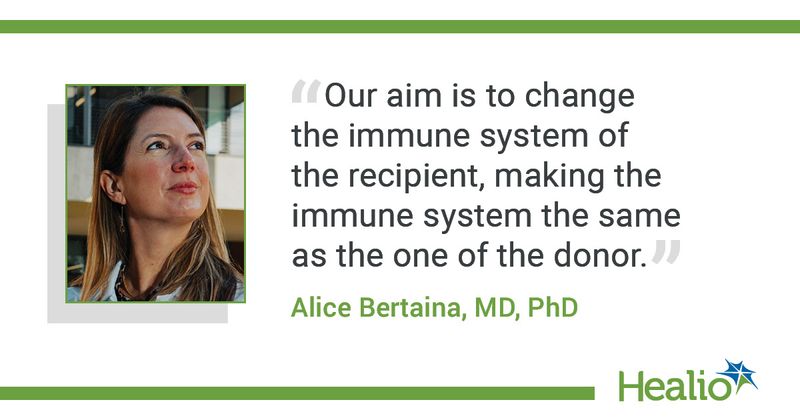Researchers successfully transplant stem cells to protect donor kidney
Click Here to Manage Email Alerts
Key takeaways:
- Transplantation of stem cells prior to the patient receiving the donor kidney prevented use of long-term anti-rejection drugs.
- Stem cells may be used for other organ transplants in the future.
Researchers at Stanford Medicine showed that a stem cell transplant from a living-related kidney donor before the recipient received the transplant from the same donor eliminated the need for use of immunosuppressive drugs long term.
Results from the procedure, called a dual immune/solid organ transplant and conducted with 3 children with rare immune disorders who were on dialysis due to end-stage kidney disease, were published in the New England Journal of Medicine.

The stem cell transplant “enables transplantation between a donor and recipient whose immune systems are genetically half-matched,” Stanford Medicine said in a press release.
Previous attempts
Recipients of solid organ transplants are required to take a number of immunosuppressive drugs to prevent the body from rejecting the organ. “Previous attempts to induce tolerance by establishing transient mixed chimerism required revisions of the conditioning regimen to overcome engraftment syndrome and improve the consistency of the results,” Alice Bertaina, MD, PhD, Stem Cell Transplantation and Regenerative Medicine section chief at Stanford Medicine Children’s Health, and colleagues wrote in the paper. “Persistent mixed chimerism in the context of an [human leukocyte antigen] HLA mismatch has allowed the reduction of immunosuppression after kidney transplantation to a single agent but has not allowed complete discontinuation of immunosuppression in those cases,” they wrote.
“In contrast, our strategy resulted in rapid and persistent full donor lymphoid and myeloid engraftment and complete discontinuation of all immunosuppression by day 30 after kidney transplantation, without severe [graft vs. host disease] GVHD.”
Each patient continued to have normal renal function without immunosuppression at 22 to 34 months after kidney transplantation, the authors wrote.
Healio interviewed Bertaina about the study and results.
Healio: Explain why you chose transplants with living-related donors for this study vs. deceased donor transplants. Would these donor kidneys show better tolerance at baseline?
Alice Bertaina, MD, PhD: Donors must be able to provide both stem cells and a kidney. Our aim is to change the immune system of the recipient, making the immune system the same as the one of the donor. Then, when we do the transplant, there are similarities in immune response. This helps limit the possibility that the patient rejects the organ.
For pediatric patients, living-related donors (LRDs) provide the best possible outcome.
At baseline, we see LRDs show better tolerance. Patients receiving a transplant from a living donor have a longer lifespan than deceased donors (DD) transplants. In general, the occurrence of chronic rejection ultimately is the reason the allograft is better with a living donor.
Healio: Could this research be extended to other organ transplants, such as heart or liver transplants?
Bertaina: We have hope. We are already looking at how we can develop this approach with the liver and the small intestine. And, down the line, we can look at ways to work on the heart and the lungs. The primary difference is that with the liver and the small intestine, we can use a living donor, but we cannot do so with others.
For the liver specifically, we are already in an advanced phase of our research and feel this approach can produce a successful outcome, similar to the results that we have seen so far in kidney transplants.
Healio: What is the importance or significance of deriving the donated kidneys from the same donor? Will this be required in efforts to limit rejection long-term?
Bertaina: The rationale behind this approach is having an immune system match between the donor and the patient. This is so that, immunologically, it makes it near-impossible for that immune system to reject the allograft. We are targeting a full donor chimerism, which means that 100% of bone marrow and blood cells are of donor origin.
This is one of the main differences between our approach and other approaches tested so far in adults. Many groups have worked in adult transplants to try and reach this goal, but they have mostly only targeted mixed chimerism. With the mixed chimerism, there will always be T-cells from the recipient circulating capable of rejecting the allograft.
Healio: Can you give us an update on how the patients in the study are doing now (the study indicates they remain rejection-free at 22-34 months).
Bertaina: The three patients with dual immune/solid organ transplant continue to have excellent results at follow-up. All of them remain without sign of rejection, free of immune rejection and have not developed any complications since the publication of the study.
